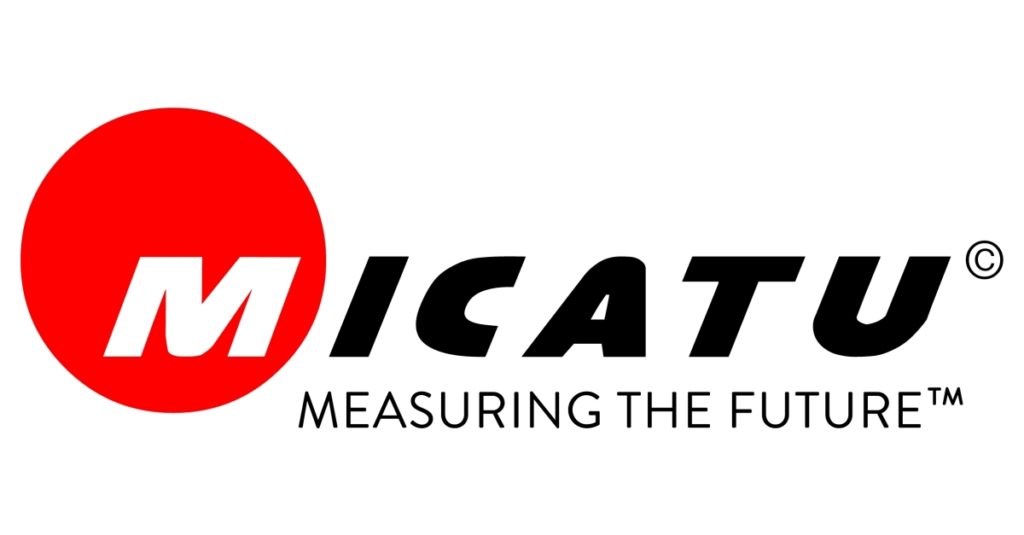

Member Spotlight: Micatu
Medium Saturday, January 22nd 2022
Dynamo Energy Hub is proud to present an interview with Virtual Cleantech Member Michael Sexton, Co-Founder and Executive Vice President of Sales and Marketing of smart grid technology company Micatu. Micatu relieves strains put on distributed grids by using cutting-edge optical sensor technology to deliver fast, accurate, and detailed data about energy usage and transmission. With distributed energy resources rapidly accelerating deployment, Micatu helps utilities keep pace all while maintaining service and safety standards.
Michael is dedicated to creating pragmatic solutions for challenging problems. His decades of experience and combination of technical and business insights give him a unique perspective on the future of the grid — allowing Micatu to bring concrete and lasting solutions to the table. Michael sat down with our very own Jessica Krejcie, Chief Operating Officer at Dynamo Energy Hub, to discuss Micatu and their role in the clean energy transition.
Jessica: Michael, thanks so much for talking with me today about Micatu! I’d like to begin by having you explain how you saw a need for Micatu’s grid sensory technology in the market and what inspired you to establish Micatu into what it is today?
Michael: Having worked in this industry for over 20 years and having first-hand experience with how the industry is proceeding with new technologies, I saw a need for change. The traditional way of doing things will no longer work and, while it is reliable, it won’t get the job done for today’s needs and requirements with the changes in the grid. Micatu’s optical technology is the next evolution in sensing and where the power industry needs to go. With stated goals of zero carbon emissions and the projected amount of wind and solar that is going to hit the grid, utilities are going to need a new better technology that can give them the information digitally and in real time faster than ever before. That’s where Micatu and GridView platform come in – this is what I envisioned and what we at Micatu are building.
Jessica: How has the shift in influence of renewables on the grid and a new emphasis on real-time grid voltage data since 2015 played a role in Micatu’s growth story?
Michael: The original grid used an alternating current (AC), which means the die was already cast 100-plus years ago. Since then, we’ve been living with a one-way power system of generation, transmission, distribution and consumption; this means all energy was planned to start at the head of the system generation.
Now we have photovoltaic and wind farms coming into play, expanding the whole energy platform, yet our grid system is designed for original generation at the head end: gas-fired and coal-fired plants remain the backbone of the original infrastructure. The additional renewable power being interjected into the system is coming in somewhere in the middle instead of the head end. Changing where the power is interjected interferes with the AC waveform.
Specifically, when you start interjecting different sources, such as PV or solar, the waveforms of each source don’t align with one another since they all have their own distinct sine waves.
The other interference occurs since the generation now has the ability to not only flow downstream but also upstream, as the power can flow backward. This all creates issues for utilities since utilities have never really worried about backflow besides when someone turned on a generator which wasn’t hooked up properly.
But now all these new inflow points introduce backflow and create a whole different safety dynamic for the utility. For example, when someone works on a power line, they now also have to isolate from the back end as well as the front end since the power could be coming from either direction. This multidirectional flow could end up hurting someone.

Jessica: What can Micatu’s sensor measure? And to which level is Micatu able to measure to?

Michael: Micatu’s sensors can measure current and voltage accurately as well as provide an advanced harmonic scheme. As we begin deploying technology that’s currently still being written, Micatu can help explain what the harmonics mean. This opens up new opportunities for monitoring and for our product.
This is also how Micatu differentiates itself from existing technology since historically the grid was never concerned about harmonics.
“Traditional sensors can only do harmonics, to the seventh, maybe to the eleventh degree. Now we have the ability to read out to the 250th on voltage and can go to the 18th on current harmonics. We’re working towards matching how far the voltage and current can be read out. Utilities are starting to look downstream and see how these different imbalances in harmonics affect the overall power system.”
For example, a homeowner in the Southwest can put a solar panel on their house and sell the power generated back to the utility. But this utility might have roughly 2,000 homes feeding power back into the grid. Managing that level of harmonic imbalances with all those new sources is an issue utilities are starting to wrestle with right now. This is where Micatu’s technology can help and where our technology exceeds what else is available on the market today.
Jessica: It seems like a very similar concept to acoustic vibration, just in the electrical space, but that Micatu is at the forefront of exploring these issues.
Michael: Exactly. It’s all new territory and we don’t know what we don’t know. The scary part is that it started out as voltage only. Now, we’re starting to see what happens if we also look at the current — which no one has ever looked at before. Next, we want to determine if there’s an advantage of looking at current harmonics. Micatu is internally asking these questions specifically because we don’t know. Eventually the science is going to take off, but right now it’s unclear what do to with current harmonics out to the 25th degree.
“From Micatu’s perspective, data is the new currency of the grid so we try and get the highest fidelity data possible.”
Then we can figure out what to do with it. This starts with our sensors. If you can get better data out of the sensor, you can make better decisions. And that’s our whole premise.
Jessica: In terms of both accuracies, are your sensors of higher fidelity or resiliency? What then is the best way to communicate the data you’ve collected to your clients?
Michael: It’s more about accuracy and fidelity of the information. Resiliency is kind of a given inside the industry. While the older technology is just analog, Micatu is a fully digitized system. However, the downside of being fully digitized is, like in any system, the electronic side of it.
“Fortunately, we realized that the weak point around longevity will be electronics, which we then accounted for in the design process. Our entire platform allows for electronics to be changed by sliding things in and out without ever having to shut down your system. Our design allows for updates to the system with improved technology without massive issues.”
The actual hardware isn’t being replaced, just the electronic components. This is how I pitch it to utilities since they’re replacing modems and computers. People want something that’s going to last 50 years, but that’s not a reality if it’s electrics based.

Some of the data we hand off are very specific pieces of information that utilities want to see; Micatu provides higher fidelity on the data than utilities can currently get. At the end of the day, utilities often grab data just to grab data. Utilities are still learning what to do with the information, so no decisions are really being made with the data. And while some companies are beginning to analyze this data, for the most part it’s still a wide-open space.
Jessica: Why did Micatu decide to join Dynamo Energy Hub?
Michael: The impetus for joining Dynamo was to collaborate with other startup organizations in an environment where we can actually sit around and talk about the challenges we face: from regulation, to attorneys, to finding venture capital and additional streams of funding. It’s wonderful to be part of a community where we can ask other start-ups questions like ‘what are the good points or the bad points?’ and ‘where have you found solace?’.
“The Dynamo network also allows us to better integrate within the industry- as well as open-up new doors.”
Joining organizations like Dynamo, it feels like I know someone who knows someone. It’s all about connecting the dots and helping each other out. We’re all here to win and we can all win together. That’s how I look at what Dynamo is building.
“Dynamo provides an opportunity for people to openly collaborate, to have open dialogue and discussion, to advance a topic that we need to get advanced, and then we all win in the process.”
Jessica: Thank you, Michael for taking the time to speak with Dynamo — we couldn’t be more excited to have Micatu as part of the Dynamo network. We look forward to seeing all the amazing work you and your team accomplish!
For media relations contact
Claudia Prandoni Marketing & Communications Manager